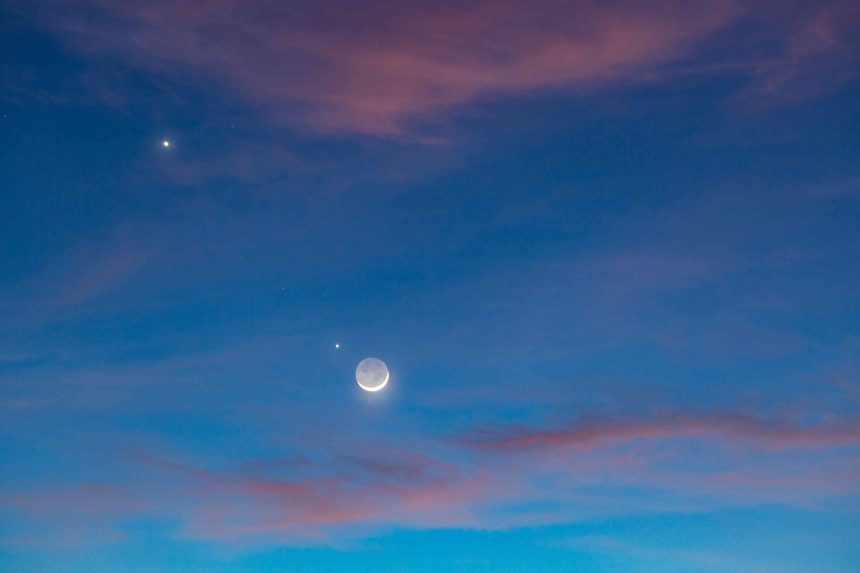From the northern lights ringing in the New Year to a spectacular meteor shower, January is shaping up to be an exciting month for stargazers. In fact, every night this month there is something to admire in the night sky, as a four-planet parade of Venus, Saturn, Jupiter, and Mars will be visible throughout January.
A few hours after the sky darkens, Venus and Saturn will become visible in the southwest with Jupiter above them and Mars to the east. If you have a telescope, you’ll be able to spot two additional planets that aren’t visible to the naked eye: Uranus and Neptune, according to NASA.
The line that these planets are on is called the ecliptic, which represents the plane of the solar system in which the planets orbit around the sun. “This is, incidentally, why we sometimes observe planets appearing to approach closely to each other in the sky, as we view them along a line while they careen around the cosmic racetrack,” NASA explains.
Venus and Saturn will get closer each evening as the month progresses. In mid-January, NASA says these planets “head for a super close approach.” On January 17 and January 18, Venus and Saturn will begin to part ways.
Mars will reach opposition this month, meaning the planet lies directly on the opposite side of Earth from the sun, forming a straight line. NASA explains that this is when the planet will be closest to Earth, making it appear bigger and brighter. Mars reaches opposition about once every two years.
While spotting planets in alignment isn’t uncommon, what’s truly special is seeing four bright planets in the sky at once. NASA says this occurrence doesn’t happen every year, so check it out while you can.







